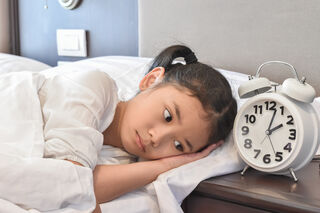
Last March, three-year-old Sam was just learning to sleep in his own bed for almost the whole night. “Then, shook our tree hard,” reports his dad. “In two weeks, he was back in our bed, and now, six months later, he has no plans to leave.” How are the parents coping? “We’re not. Neither one of us is very well; we wake up three or four times a night and have these weird, vivid .”

Source: Chinnapong/Shutterstock
Experts have much to say about sleep troubles in young children and sleep troubles in adults, but Sam’s family has a family sleeping problem, and it’s more common during the pandemic than not. It’s important to widen the frame of understanding because efficient sleep is fundamental to children’s and adults’ emotional and physical health. Sleep is when the brain repairs and sorts itself out, just in time for another dawn. What started off as a few family fun days or weeks in PJs seven months ago has often morphed into trouble falling asleep, more conflicts around bedtime, and increased nighttime awakening for children. For adults, vivid dreams that are often distressing and a reduction in the “restfulness,” if not the duration, of sleep have been common.
Research in the early days of the COVID-19 crisis found that children were napping less during the day and going to bed later. More recent research with one- to six-year-olds found that their parents were suffering from at twice the rates they were before the pandemic and that their children suffered from negative changes in sleep quality. The culprits are ubiquitous and familiar: worry about getting sick, radical changes in daytime and nighttime routines, reductions in physical activity, increased blue-light paired with less natural light exposure, and unhealthy changes in .
As a clinician, I see many families worn to a nub, exhausted by the pervasive and unremitting uncertainty and by being on high alert all day and—it appears from the family sleeping problem—all night. Our nervous systems seem to have rebooted themselves to a higher threat alert, and we are paying the price of that vigilance. There are some “silver lining” families that are getting more and better sleep now, but the ones I know consider themselves lucky, not superior.
So, what’s a family to do? Here are some suggestions for the family sleep problem:
Children
- Regularly scheduled naps were easier when your children were in group care because naps were part of the culture and peer expectations helped a lot. It’s not easy now that it’s all on you, but it’s worth the effort and tears to stick with naptime religiously;
- Daytime should have as much physical exertion as possible as well as reassuring conversations to answer their questions about this weird time and how they are feeling. This stuff belongs on the table, not under it. Keep dinner light and enjoyable and free from heavy foods and heavy conversations;
- Deceleration should start after dinner. Turn off screens during the hour before bedtime, bathe, maybe have a light snack, empty that bladder, share a book, and turn to what I call the “sleep cubby”—a collection of sleep-related items (softies or blankies chosen by the child). Expect stalling, but hold your ground through the protests—you know what’s best.
Grown-Ups
- Get a grip on your diet, and avoid heavy meals, , and in the evening;
- Get some exertional exercise and/or stretch every day;
- Keep your bed for sleeping, not for watching TV or playing video games. Your brain can be trained;
- Design and follow a pre-bedtime routine that unwinds you, not simply entertains you. Getting and giving massages, listening to soothing music, reading books, and using relaxing fragrances work wonders.